Ok. A new thread here.  https://abs.twimg.com/emoji/v2/... draggable="false" alt="😊" title="Lächelndes Gesicht mit lächelnden Augen" aria-label="Emoji: Lächelndes Gesicht mit lächelnden Augen">
https://abs.twimg.com/emoji/v2/... draggable="false" alt="😊" title="Lächelndes Gesicht mit lächelnden Augen" aria-label="Emoji: Lächelndes Gesicht mit lächelnden Augen"> https://abs.twimg.com/emoji/v2/... draggable="false" alt="🙏" title="Folded hands" aria-label="Emoji: Folded hands">
https://abs.twimg.com/emoji/v2/... draggable="false" alt="🙏" title="Folded hands" aria-label="Emoji: Folded hands"> https://abs.twimg.com/emoji/v2/... draggable="false" alt="🙏" title="Folded hands" aria-label="Emoji: Folded hands">
https://abs.twimg.com/emoji/v2/... draggable="false" alt="🙏" title="Folded hands" aria-label="Emoji: Folded hands">
There are 8 steps of attaining yog, @UnSubtleDesi Nupur ji. You are attempting the 7th step directly. It will be a very Herculean task for you if you start at step-7 bypassing previous ones.
These 8 steps are called 8 limbs (ashTānga) of Yog. https://twitter.com/unsubtledesi/status/1283844619638202368">https://twitter.com/unsubtled...
There are 8 steps of attaining yog, @UnSubtleDesi Nupur ji. You are attempting the 7th step directly. It will be a very Herculean task for you if you start at step-7 bypassing previous ones.
These 8 steps are called 8 limbs (ashTānga) of Yog. https://twitter.com/unsubtledesi/status/1283844619638202368">https://twitter.com/unsubtled...
Step 1 - Yama (यम) - literally - regulations
१. अहिंसा - not meaning to harm anything by body, mind, buddhi.
२. सत्य - being truthful (body, speech thought)
३. अस्तेय - not taking in anything that isn’t mine. Here “I” is operative since it’s definition expands with sādhanā
१. अहिंसा - not meaning to harm anything by body, mind, buddhi.
२. सत्य - being truthful (body, speech thought)
३. अस्तेय - not taking in anything that isn’t mine. Here “I” is operative since it’s definition expands with sādhanā
४. ब्रह्मचर्य - all actions of body, mind, buddhi, ahamkāra, chitta when done in accordance to above three yamas is brahmacharya. Not just sex. That is a very narrow meaning.
५. अपरिग्रह - trying and not being attached to all the actions in accordance to above 4 and their phala.
५. अपरिग्रह - trying and not being attached to all the actions in accordance to above 4 and their phala.
We are stuck at entry level
Yama 3 & 5 are key here. Since 3rd + 5th = 4th.
3. Don’t enjoy that which is not mine
5. Don’t get too attached to enjoying that which IS mine
1. Don’t hurt in any way that which is rightfully mine & which I am trying to enjoy without attachment
Yama 3 & 5 are key here. Since 3rd + 5th = 4th.
3. Don’t enjoy that which is not mine
5. Don’t get too attached to enjoying that which IS mine
1. Don’t hurt in any way that which is rightfully mine & which I am trying to enjoy without attachment
We lose most of our inner peace at this entry level barrier
The most important aspect to understand that brahmacharya actually means astèya + aprigraha
Astèya = मातृवत् परदारेषु परद्रव्येषु लोष्टवत्
Aparigraha = तेन त्यक्तेन भुन्जिथा
The most important aspect to understand that brahmacharya actually means astèya + aprigraha
Astèya = मातृवत् परदारेषु परद्रव्येषु लोष्टवत्
Aparigraha = तेन त्यक्तेन भुन्जिथा
This is second anga. These are simple actually. To understand if not to implement.
In my experience,
1—> 5 —> 4 —> 3 —> 2
In my experience,
1—> 5 —> 4 —> 3 —> 2
The Hindu insistence on shaucha is precisely this. You feel good when you are clean, your surrounding is clean, yours clothes too.
It reflects on mind and buddhi too.
It reflects on mind and buddhi too.
The difference between dèva and asura is precisely this.
As per modern business school ethic, we are following and being taught Duryodhana’s dictum - असंतोषं श्रियं मूलात् (discontent leads to prosperity.
We are taught institutionally to negate the ultimate aim of niyama.
As per modern business school ethic, we are following and being taught Duryodhana’s dictum - असंतोषं श्रियं मूलात् (discontent leads to prosperity.
We are taught institutionally to negate the ultimate aim of niyama.
The third anga is āsana. While haTHayoga pradīpikā and many other sources have elaborately discussed various yōgāsana-s which is popularly known as Yoga in west these days, this is what Maharshi Patanjali actually meant  https://abs.twimg.com/emoji/v2/... draggable="false" alt="👇🏼" title="Rückhand Zeigefinger nach unten (mittelheller Hautton)" aria-label="Emoji: Rückhand Zeigefinger nach unten (mittelheller Hautton)">
https://abs.twimg.com/emoji/v2/... draggable="false" alt="👇🏼" title="Rückhand Zeigefinger nach unten (mittelheller Hautton)" aria-label="Emoji: Rückhand Zeigefinger nach unten (mittelheller Hautton)"> https://abs.twimg.com/emoji/v2/... draggable="false" alt="👇🏼" title="Rückhand Zeigefinger nach unten (mittelheller Hautton)" aria-label="Emoji: Rückhand Zeigefinger nach unten (mittelheller Hautton)">
https://abs.twimg.com/emoji/v2/... draggable="false" alt="👇🏼" title="Rückhand Zeigefinger nach unten (mittelheller Hautton)" aria-label="Emoji: Rückhand Zeigefinger nach unten (mittelheller Hautton)">
There is a concept of āsana-siddhi in sānkhyayogik darshans.
Ability to win over an āsana in order to complete one sankalpa. It literally means making body supple enough to hold on for long times.
Ability to win over an āsana in order to complete one sankalpa. It literally means making body supple enough to hold on for long times.
On deeper level, āsanasiddhi means having a conviction (and readiness of body-mind-buddhi) to complete a task or a sankalpa.
At times mind is ready but body is not fit to see a task/aim/project through.
Having body-mind-buddhi aligned and overoiled is āsana-siddhi.
At times mind is ready but body is not fit to see a task/aim/project through.
Having body-mind-buddhi aligned and overoiled is āsana-siddhi.
Fifth anga is prāNāyāma. Literally and popularly means controlling breathing.
prāNa on the other hand is far deeper concept than physical breathing although it includes physical breathing in its purview.
One has to look into prashNopanishad for understanding what prāNa is.
prāNa on the other hand is far deeper concept than physical breathing although it includes physical breathing in its purview.
One has to look into prashNopanishad for understanding what prāNa is.
prāNa - pra (प्र - signifying prakar svatva/intensity) + ān (आन् - to bring) One who “brings” intensely is prāNa.
Bring where? what? how? That is the differentiator.
Furthermore, prāNa exists with his partner - rayi (रयि). In other words, prāNa is purusha and rayi is prakruti
Bring where? what? how? That is the differentiator.
Furthermore, prāNa exists with his partner - rayi (रयि). In other words, prāNa is purusha and rayi is prakruti
Chètana PrāNa intensely brings/binds rayi.
A prāNa which takes something up is ud+āna. On adhibhautika plane, any anabolic activity (which builds up things from its units) is powered by udāna.
Any catabolic activity (bringing down, reductionanism) is powered by apāna.
A prāNa which takes something up is ud+āna. On adhibhautika plane, any anabolic activity (which builds up things from its units) is powered by udāna.
Any catabolic activity (bringing down, reductionanism) is powered by apāna.
The urge of anything to achieve equilibrium and negate any duality is powered by samāna.
So on and so forth
On adhidaivik plane, udāna is signified by hiranYagarbha brahmadeva/sūrya.
Samāna is signified by Vishnu
apāna is signified by Shankara
vyāna is signified by gaNapati
So on and so forth
On adhidaivik plane, udāna is signified by hiranYagarbha brahmadeva/sūrya.
Samāna is signified by Vishnu
apāna is signified by Shankara
vyāna is signified by gaNapati
Thus prāNāyāma actually means “expanding the prāNa”.  https://abs.twimg.com/emoji/v2/... draggable="false" alt="😊" title="Lächelndes Gesicht mit lächelnden Augen" aria-label="Emoji: Lächelndes Gesicht mit lächelnden Augen">
https://abs.twimg.com/emoji/v2/... draggable="false" alt="😊" title="Lächelndes Gesicht mit lächelnden Augen" aria-label="Emoji: Lächelndes Gesicht mit lächelnden Augen"> https://abs.twimg.com/emoji/v2/... draggable="false" alt="🙏" title="Folded hands" aria-label="Emoji: Folded hands">
https://abs.twimg.com/emoji/v2/... draggable="false" alt="🙏" title="Folded hands" aria-label="Emoji: Folded hands">
This again starts happening more and more easily and holistically as we start getting some control over our breathing and food/drink/thought intake. Shaucha. https://abs.twimg.com/emoji/v2/... draggable="false" alt="😊" title="Lächelndes Gesicht mit lächelnden Augen" aria-label="Emoji: Lächelndes Gesicht mit lächelnden Augen">
https://abs.twimg.com/emoji/v2/... draggable="false" alt="😊" title="Lächelndes Gesicht mit lächelnden Augen" aria-label="Emoji: Lächelndes Gesicht mit lächelnden Augen">
This again starts happening more and more easily and holistically as we start getting some control over our breathing and food/drink/thought intake. Shaucha.
Fifth is pratyāhāra. Literally means withdrawal.
Again, for pratyāhāra to be accomplished (siddhi), we need to revisit our first set of tweets on Yama.
Astèya + aparigraha = brahmacharya.
In simple words, pratyāhāra is logical extension of brahmacharya. https://abs.twimg.com/emoji/v2/... draggable="false" alt="😊" title="Lächelndes Gesicht mit lächelnden Augen" aria-label="Emoji: Lächelndes Gesicht mit lächelnden Augen">
https://abs.twimg.com/emoji/v2/... draggable="false" alt="😊" title="Lächelndes Gesicht mit lächelnden Augen" aria-label="Emoji: Lächelndes Gesicht mit lächelnden Augen">
Again, for pratyāhāra to be accomplished (siddhi), we need to revisit our first set of tweets on Yama.
Astèya + aparigraha = brahmacharya.
In simple words, pratyāhāra is logical extension of brahmacharya.
When brahmacharya starts percolating in mind-buddhi thereby resulting in us getting increasing control over various tendencies of our chitta (antahkaraNa :mind-buddhi-ahamkāra), pratyāhāra starts materialising
This ends external 5 limbs of yoga as external 5 limbs of prakruti
This ends external 5 limbs of yoga as external 5 limbs of prakruti
The remaining three limbs of yoga (just as remaining three limbs of prakruti are sūkshma).
And while much is written about it, it becomes easier if one has internalized the understood the external five described previously.
And while much is written about it, it becomes easier if one has internalized the understood the external five described previously.
dhāraNā - ability to hold on, sustained flight, focus.
Once preparatory ground is created by previous five external aspects, dhāraNā is logical extension of pratyāhāra. https://abs.twimg.com/emoji/v2/... draggable="false" alt="😊" title="Lächelndes Gesicht mit lächelnden Augen" aria-label="Emoji: Lächelndes Gesicht mit lächelnden Augen">
https://abs.twimg.com/emoji/v2/... draggable="false" alt="😊" title="Lächelndes Gesicht mit lächelnden Augen" aria-label="Emoji: Lächelndes Gesicht mit lächelnden Augen">
When we withdraw from everywhere else, we easily focus on some thing/thought/idea/dèvatā/tarka.
Once preparatory ground is created by previous five external aspects, dhāraNā is logical extension of pratyāhāra.
When we withdraw from everywhere else, we easily focus on some thing/thought/idea/dèvatā/tarka.
In words of great Sir Humphrey Appleby in BBC TV series - Yes Minister :
“Are you a high-flier? Or are you actually a low-flier supported by occasional gusts of wind?” https://abs.twimg.com/emoji/v2/... draggable="false" alt="😊" title="Lächelndes Gesicht mit lächelnden Augen" aria-label="Emoji: Lächelndes Gesicht mit lächelnden Augen">
https://abs.twimg.com/emoji/v2/... draggable="false" alt="😊" title="Lächelndes Gesicht mit lächelnden Augen" aria-label="Emoji: Lächelndes Gesicht mit lächelnden Augen">
A high flier does not need gusts of wind to achieve his heights and sustain there. He is self-powered.
“Are you a high-flier? Or are you actually a low-flier supported by occasional gusts of wind?”
A high flier does not need gusts of wind to achieve his heights and sustain there. He is self-powered.
One who has accomplished the first five limbs and mastered dhāraNā- can do sustained flights in that domain (of thing/idea/thought/tarka/dèvatā) with ease
Most of us are low fliers who are supported by gusts of wind such as planetary alignment/mood (of self and those around) etc
Most of us are low fliers who are supported by gusts of wind such as planetary alignment/mood (of self and those around) etc
So our dhāraNā is circumstantial. Not always completely self-propelled
This ability to attain dhāraNā on anything at will for however long without fatigue is essential here
In this way, Sānkhya yoga is extremely shani-pradhān. https://abs.twimg.com/emoji/v2/... draggable="false" alt="😀" title="Grinsendes Gesicht" aria-label="Emoji: Grinsendes Gesicht"> A flash of brilliance is not very valuable here
https://abs.twimg.com/emoji/v2/... draggable="false" alt="😀" title="Grinsendes Gesicht" aria-label="Emoji: Grinsendes Gesicht"> A flash of brilliance is not very valuable here
This ability to attain dhāraNā on anything at will for however long without fatigue is essential here
In this way, Sānkhya yoga is extremely shani-pradhān.
Dhyāna is the 7th limb. While it is distinct, it most of the times co-exist with dhāraNā. At least in my experience
I have tried observing when I achieve dhyāna and when I revert back to dhāraNā. Actually I observe it everyday
No wiki screenshot here. It is experiential.
I have tried observing when I achieve dhyāna and when I revert back to dhāraNā. Actually I observe it everyday
No wiki screenshot here. It is experiential.
When you start “connecting/coupling” with that thing/thought/idea/dèvatā/tarka - that is dhyāna in my experience.
Being an engineer and a scientist, I find the analogy of gear-box useful here.
Until dhāraNā we align ourself as perfectly as possible with that subject.
Being an engineer and a scientist, I find the analogy of gear-box useful here.
Until dhāraNā we align ourself as perfectly as possible with that subject.
Dhyāna is when we actually make contact with that subject. It is a bit turbulent process initially.
But when coupling is complete - we enter samādhi (सम् + आ + पत् - To fall in completely and equanimously from all sides).
To continue the gearbox analogy, a successful coupling
But when coupling is complete - we enter samādhi (सम् + आ + पत् - To fall in completely and equanimously from all sides).
To continue the gearbox analogy, a successful coupling
Most of us, in my opinion mistake dhāraNā (focus) for dhyāna (the process).
In my limited experience, the state of dhyāna is mostly very short lived.
If coupling is unsuccessful, we revert back to dhāraNā after some “turbulence”.
If coupling is successful, we enter samādhi.
In my limited experience, the state of dhyāna is mostly very short lived.
If coupling is unsuccessful, we revert back to dhāraNā after some “turbulence”.
If coupling is successful, we enter samādhi.
I have no adhikāra to speak on samādhi. Have not mastered it yet.  https://abs.twimg.com/emoji/v2/... draggable="false" alt="🙏" title="Folded hands" aria-label="Emoji: Folded hands">
https://abs.twimg.com/emoji/v2/... draggable="false" alt="🙏" title="Folded hands" aria-label="Emoji: Folded hands">
As I said, an occasional flash of brilliance (ie samādhi) is not much valuable (although it is a mark that you are on right path).
साधो सहज समाधि भली said kabīra.
This “sahaja-samādhi” is what we aspire.
As I said, an occasional flash of brilliance (ie samādhi) is not much valuable (although it is a mark that you are on right path).
साधो सहज समाधि भली said kabīra.
This “sahaja-samādhi” is what we aspire.
किती योगमूर्ती किती पुण्यमुर्ती
किती धर्मसंस्थापना अन्नशांती
पस्तावलो कावलो तप्त जालो
तुझा दास मी व्यर्थ जन्मास आलो...
जय जय रघुवीर समर्थ!!! https://abs.twimg.com/emoji/v2/... draggable="false" alt="🙏" title="Folded hands" aria-label="Emoji: Folded hands">
https://abs.twimg.com/emoji/v2/... draggable="false" alt="🙏" title="Folded hands" aria-label="Emoji: Folded hands"> https://abs.twimg.com/emoji/v2/... draggable="false" alt="🙏" title="Folded hands" aria-label="Emoji: Folded hands">
https://abs.twimg.com/emoji/v2/... draggable="false" alt="🙏" title="Folded hands" aria-label="Emoji: Folded hands"> https://abs.twimg.com/emoji/v2/... draggable="false" alt="🙏" title="Folded hands" aria-label="Emoji: Folded hands">
https://abs.twimg.com/emoji/v2/... draggable="false" alt="🙏" title="Folded hands" aria-label="Emoji: Folded hands">
किती धर्मसंस्थापना अन्नशांती
पस्तावलो कावलो तप्त जालो
तुझा दास मी व्यर्थ जन्मास आलो...
जय जय रघुवीर समर्थ!!!

 Read on Twitter
Read on Twitter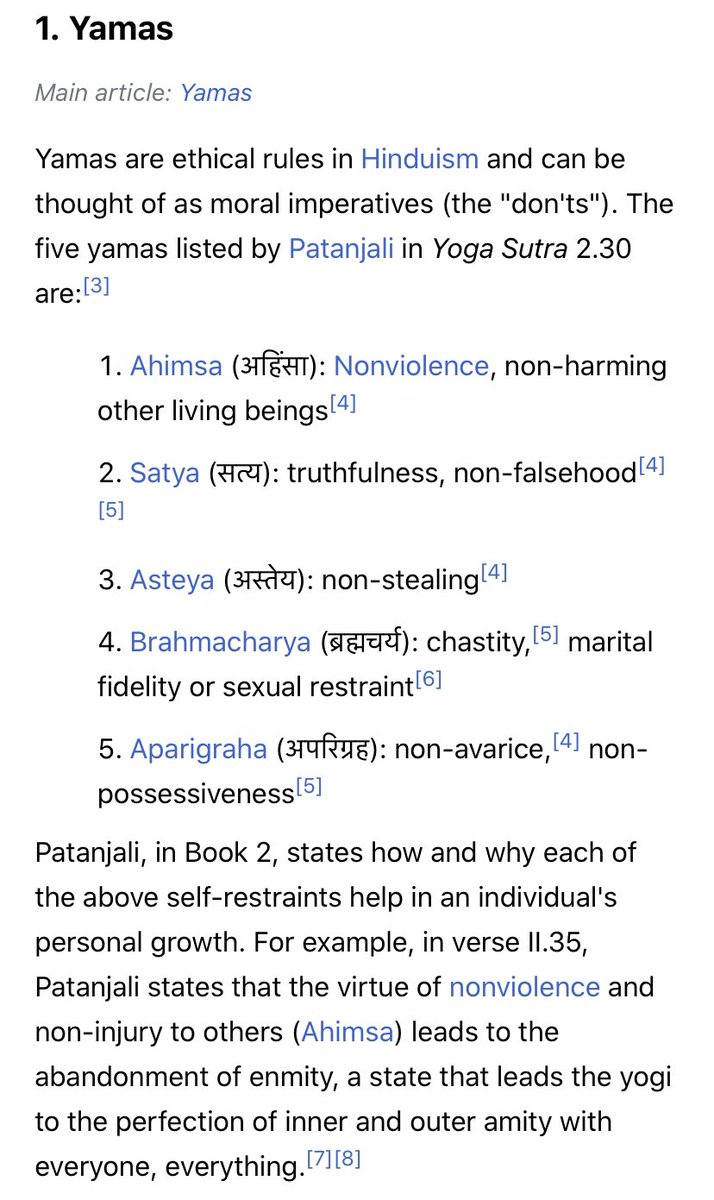
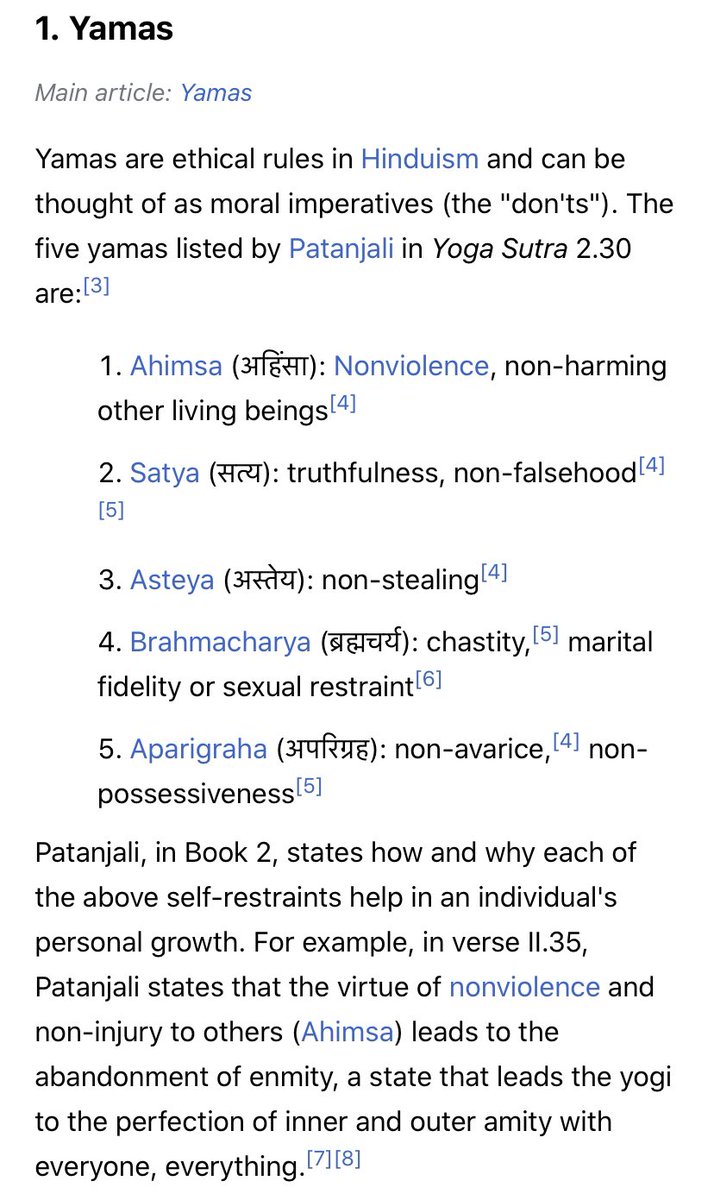

 https://abs.twimg.com/emoji/v2/... draggable="false" alt="👇🏼" title="Rückhand Zeigefinger nach unten (mittelheller Hautton)" aria-label="Emoji: Rückhand Zeigefinger nach unten (mittelheller Hautton)">" title="The third anga is āsana. While haTHayoga pradīpikā and many other sources have elaborately discussed various yōgāsana-s which is popularly known as Yoga in west these days, this is what Maharshi Patanjali actually meant https://abs.twimg.com/emoji/v2/... draggable="false" alt="👇🏼" title="Rückhand Zeigefinger nach unten (mittelheller Hautton)" aria-label="Emoji: Rückhand Zeigefinger nach unten (mittelheller Hautton)">https://abs.twimg.com/emoji/v2/... draggable="false" alt="👇🏼" title="Rückhand Zeigefinger nach unten (mittelheller Hautton)" aria-label="Emoji: Rückhand Zeigefinger nach unten (mittelheller Hautton)">" class="img-responsive" style="max-width:100%;"/>
https://abs.twimg.com/emoji/v2/... draggable="false" alt="👇🏼" title="Rückhand Zeigefinger nach unten (mittelheller Hautton)" aria-label="Emoji: Rückhand Zeigefinger nach unten (mittelheller Hautton)">" title="The third anga is āsana. While haTHayoga pradīpikā and many other sources have elaborately discussed various yōgāsana-s which is popularly known as Yoga in west these days, this is what Maharshi Patanjali actually meant https://abs.twimg.com/emoji/v2/... draggable="false" alt="👇🏼" title="Rückhand Zeigefinger nach unten (mittelheller Hautton)" aria-label="Emoji: Rückhand Zeigefinger nach unten (mittelheller Hautton)">https://abs.twimg.com/emoji/v2/... draggable="false" alt="👇🏼" title="Rückhand Zeigefinger nach unten (mittelheller Hautton)" aria-label="Emoji: Rückhand Zeigefinger nach unten (mittelheller Hautton)">" class="img-responsive" style="max-width:100%;"/>
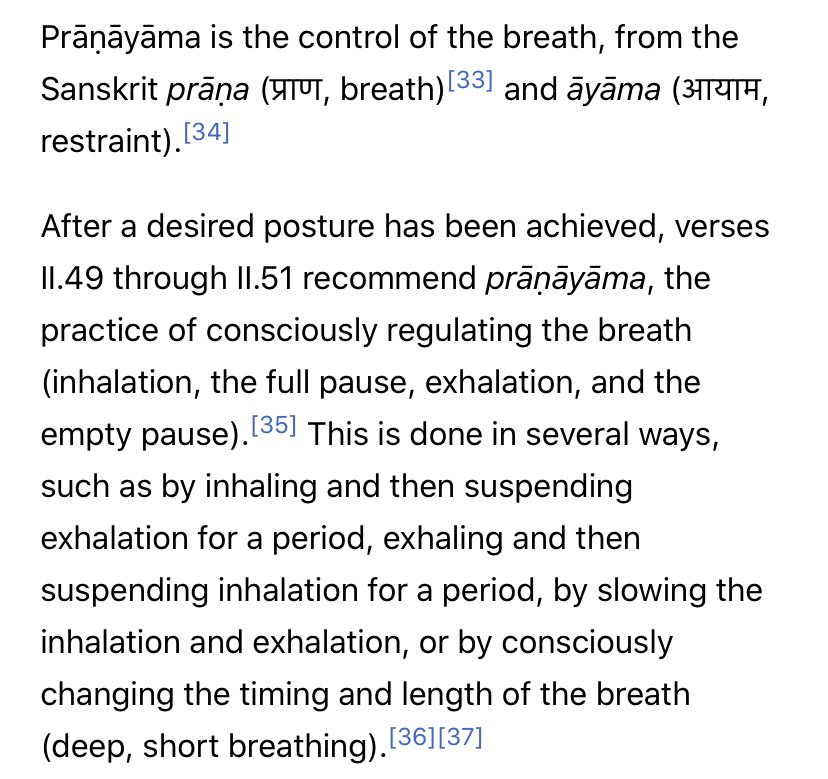
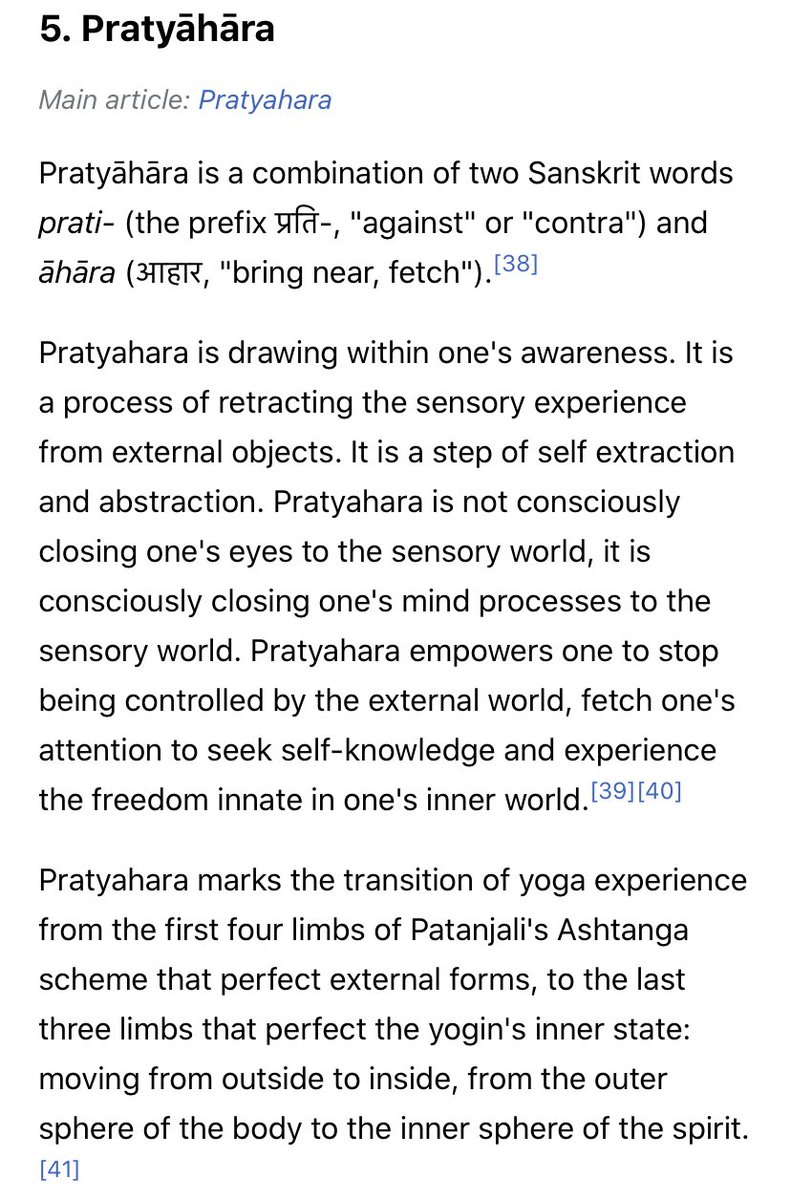 " title="Fifth is pratyāhāra. Literally means withdrawal. Again, for pratyāhāra to be accomplished (siddhi), we need to revisit our first set of tweets on Yama. Astèya + aparigraha = brahmacharya. In simple words, pratyāhāra is logical extension of brahmacharya. https://abs.twimg.com/emoji/v2/... draggable="false" alt="😊" title="Lächelndes Gesicht mit lächelnden Augen" aria-label="Emoji: Lächelndes Gesicht mit lächelnden Augen">" class="img-responsive" style="max-width:100%;"/>
" title="Fifth is pratyāhāra. Literally means withdrawal. Again, for pratyāhāra to be accomplished (siddhi), we need to revisit our first set of tweets on Yama. Astèya + aparigraha = brahmacharya. In simple words, pratyāhāra is logical extension of brahmacharya. https://abs.twimg.com/emoji/v2/... draggable="false" alt="😊" title="Lächelndes Gesicht mit lächelnden Augen" aria-label="Emoji: Lächelndes Gesicht mit lächelnden Augen">" class="img-responsive" style="max-width:100%;"/>
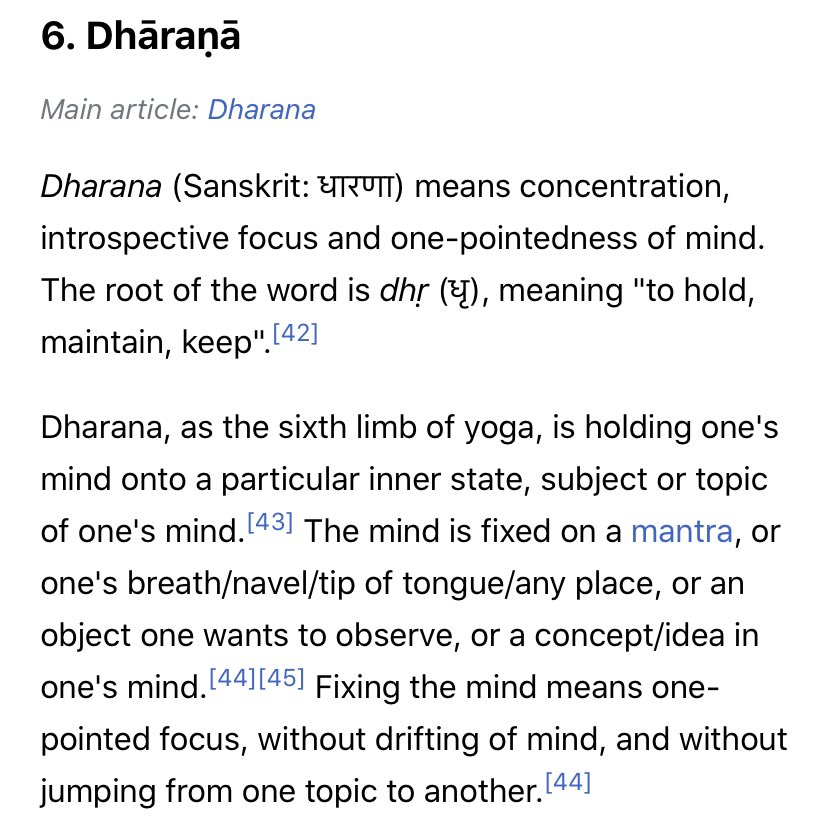 When we withdraw from everywhere else, we easily focus on some thing/thought/idea/dèvatā/tarka." title="dhāraNā - ability to hold on, sustained flight, focus. Once preparatory ground is created by previous five external aspects, dhāraNā is logical extension of pratyāhāra. https://abs.twimg.com/emoji/v2/... draggable="false" alt="😊" title="Lächelndes Gesicht mit lächelnden Augen" aria-label="Emoji: Lächelndes Gesicht mit lächelnden Augen">When we withdraw from everywhere else, we easily focus on some thing/thought/idea/dèvatā/tarka." class="img-responsive" style="max-width:100%;"/>
When we withdraw from everywhere else, we easily focus on some thing/thought/idea/dèvatā/tarka." title="dhāraNā - ability to hold on, sustained flight, focus. Once preparatory ground is created by previous five external aspects, dhāraNā is logical extension of pratyāhāra. https://abs.twimg.com/emoji/v2/... draggable="false" alt="😊" title="Lächelndes Gesicht mit lächelnden Augen" aria-label="Emoji: Lächelndes Gesicht mit lächelnden Augen">When we withdraw from everywhere else, we easily focus on some thing/thought/idea/dèvatā/tarka." class="img-responsive" style="max-width:100%;"/>


